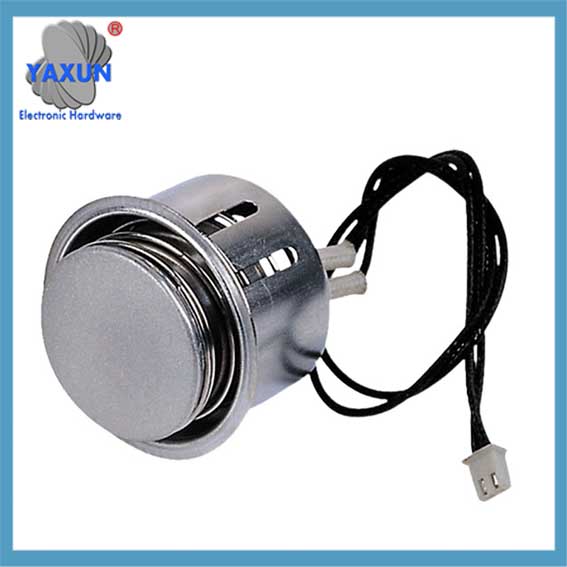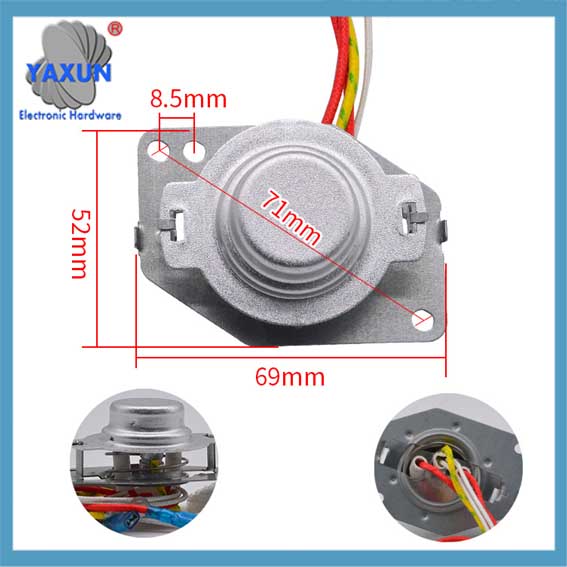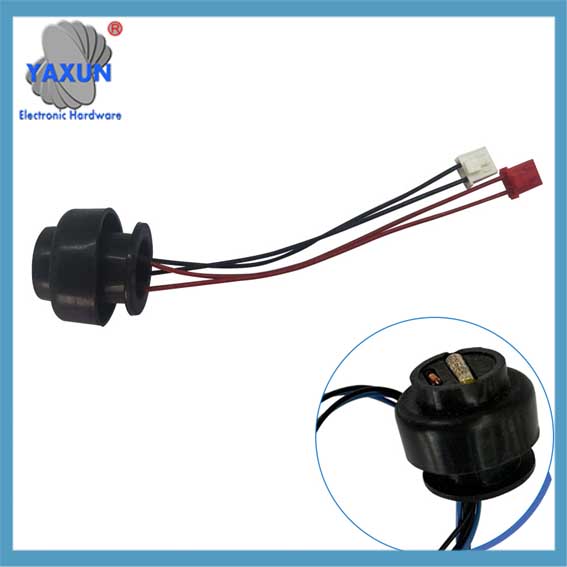Product Categories
Product Tags
Recent Posts
Surface Mount Temperature Sensor Probe for Rice Cooker
NTC Temperature Sensor Probe use in Rice Cooker top Cover, Commercial Cover Rice Cooker Top, Cover Temp Measuring Accessories 23.62 x 0.39 x 0.39 inches; 0.48 ounces. EPCOS / AVX / SEMITEC /SUBARA / MITSUBISHI / OHIZUMI NTC thermistor Sensor, Surface Mount Temperature Sensor. Rice cooker top lids temperature sensor– fast response time for immediate adjustments to heating power: with a quick response time, this probe allows for immediate adjustments to the heating power in order to maintain the desired temperature.
NTC Temperature Sensor Probe use in Rice Cooker top Cover, Commercial Cover Rice Cooker Top, Cover Temp Measuring Accessories 23.62 x 0.39 x 0.39 inches; 0.48 ounces.
Rice cooker top lids temperature sensor– fast response time for immediate adjustments to heating power: with a quick response time, this probe allows for immediate adjustments to the heating power in order to maintain the desired temperature.
Rice cooker accessories– suitable for kinds of rice cooker, provides accurate temperature monitoring.
Replacement rice cooker top cover sensor– the material is safe and light, which is wear resistance and practical for the lasting time use.
As a common equipment in modern kitchens, induction cooker is loved by the majority of users for its efficient and convenient heating method. In the work of induction cooker, temperature sensor plays a vital role. It can monitor the temperature of the stove surface in real time to ensure the cooking taste and safety of ingredients. But when the temperature sensor fails, we need to detect and repair it. This article will introduce how to detect the quality of induction cooker temperature sensor.
The induction cooker temperature sensor is mainly responsible for monitoring the temperature of the induction cooker surface to prevent equipment damage or fire caused by overheating. It controls the heating power of the induction cooker by sensing temperature changes, thereby maintaining a suitable cooking temperature.
Preparation before detection
Before performing the test, please make sure that the power is disconnected and that the induction cooker has completely cooled down. At the same time, prepare tools such as multimeter and screwdriver.
Steps for detecting the temperature sensor of the induction cooker
Disconnect the power, open the back cover of the induction cooker, and find the temperature sensor. The temperature sensor is usually located near the heating area of the induction cooker, and the shape is mostly cylindrical or flat.
Use the resistance range (Ohms) of the multimeter, and connect the red and black test leads to the two pins of the sensor respectively. Normally, the resistance of the temperature sensor should be between 100kΩ and 200kΩ. If the resistance is too large or too small, or it is infinite (open circuit) or zero (short circuit), the temperature sensor may be damaged.
Measure the resistance of the sensor again during the heating process. Normally, the resistance of the sensor should gradually decrease as the temperature rises. If the resistance changes abnormally or does not change with temperature, the sensor may be faulty.
If the resistance of the sensor is normal in the cold state, but changes abnormally during heating, the thermistor of the sensor may be faulty. At this time, the temperature sensor needs to be replaced.
Description
| TYPE: | Refrigerator Defrost Sensor | B25/50: | 3950K, 3977K, 3435K |
| Sensor Head: | O Ring, Fork Metal, Injected Tube, NPT, M16, tainless Steel Tube | Wire: | CL2 PT4,#24 2466,#28 1332 |
| Usage: | Refrigerator Defrost Sensor, Instant Water Heaters, water heater, air conditioner, refrigerator, water fountain, induction cooker, coffee maker | Pn (rated Power): | 50mw |
| High Light: | EPCOS / AVX / SEMITEC /SUBARA / MITSUBISHI / OHIZUMI NTC thermistor Sensor, Surface Mount Temperature Sensor | ||
Custom Air conditioning ntc temperature sensor Wire 0.5M~10M Theory Signal Output Origin.
| Specification Name | Scope | Detection Condition |
| R25(nominal resistance value) | 1k, 2k, 2.7k, 3k, 5k, 10k, 15k, 20k, 30k, 40k, 47k, 50k, 100k, 200k (EPCOS / AVX / SEMITEC /SUBARA / MITSUBISHI / OHIZUMI NTC thermistor) | Constant temperature 25℃±0.05℃ |
| R25 Permissible variance(%) | ±1,±2, ±3, ±5, ±10 | Constant temperature 25℃±0.05℃ |
| B25/50 or B25/85(material coefficient)(thermal-sensitivity index) | 2500~5000K | Constant temperature 25℃±0.05℃
Constant temperature 85℃±0.05℃ |
| B25/50 Value permissible variance(%) | ±1,±2 | Constant temperature 25℃±0.05℃
Constant temperature 50℃±0.05℃ |
| ∫(dissipation coefficient) | ≥0.8mw/℃ | Static in the air |
| T(thermal time constant) | ≤25S | Static in the air |
| Ta(Working temperature) | -30℃~+120℃ | |
| Pn (rated power) | 50mw | within working temperature |
| Case and head | Fork head, O ring head,drops of water head, Metal case, Thread copper case, injection head, tainless Steel Tube, or according to client’s drawing | |
| Lead wire | #24 30# 2651, UL4411 28#, double wired conductor and so on, or according to client’s request. | |
| Terminal | Can be riveted according to the requirements of various terminals |
Services
1. Your inquiry will be replied within 24 hours;
2. Well-trained and experienced staff are always at your service.
3. Unique design products and many private mold product are waiting for your choice.
4. Strictly protect your private information and your ideas of design.
FAQ
Q1. Can I have a sample order for NTC, PT100,PT1000, RTDs, and Ds18b20 SENSOR?
A: Yes, we welcome sample order to test and check quality. Mixed samples are acceptable.
Contact Us
Waiting for your email, we will reply you within 12 hours with valuable information you needed.
 English
English العربية
العربية Български
Български 粤语
粤语 中文(简体)
中文(简体) 中文(漢字)
中文(漢字) Nederlands
Nederlands Suomi
Suomi Français
Français Deutsch
Deutsch Ελληνικά
Ελληνικά Magyar
Magyar Italiano
Italiano 日本語
日本語 한국어
한국어 Polski
Polski Português
Português Română
Română Русский
Русский Slovenščina
Slovenščina Español
Español Svenska
Svenska ภาษาไทย
ภาษาไทย Türkçe
Türkçe Tiếng Việt
Tiếng Việt






